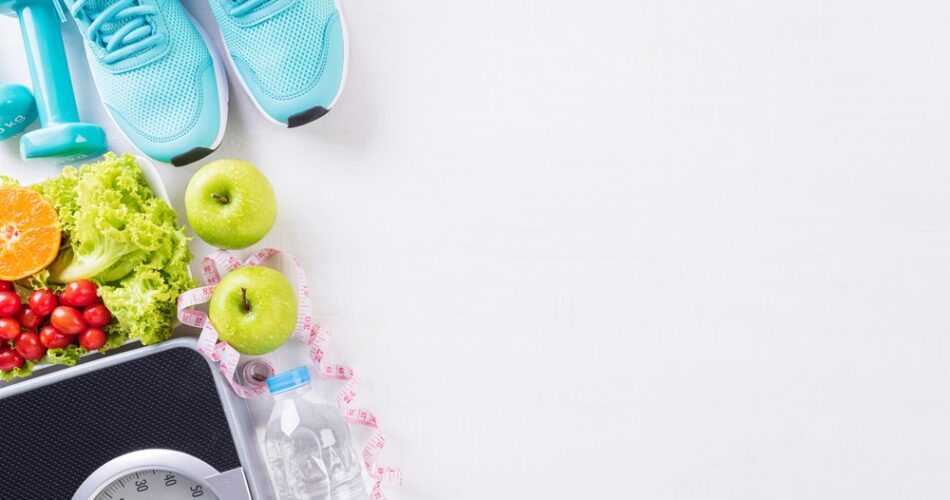As for the second, it is important to say that choosing the right food, controlling the portions and making the changes permanent is one of the main aspect of weight loss.
It may have crossed your minds that being able to lose weight only requires us to reduce the amount of food we take; no, it’s about reducing the amount but improving the quality too. A balanced diet makes you feel full, lets you have energy, and gives your body the vitamins and minerals it needs. This guide will go over some eating tips and meal plans so you do not feel shaky about your journey.
What is the Best Diet for Weight Loss:
The ideal dietary plan for weight loss includes whole foods, high protein intake and everything at the right macronutrient ratio; that is, a good amount of lean protein, good fats and complex carbs. That is not the case here because the approach taken can be managed in a fairly liberal way so that it can be sustained in the long run. Adding vegetables, whole grain foods, and lean meats, and even having nuts and fruits in between meals helps to manage cravings and improve metabolism.

Key Points:
- High-protein foods: such as chicken, fish, and legumes are ingredients that assists in building of muscles and reduces appetite.
- Fiber-rich foods: As you can see, healthier foods such as vegetables and whole grains help you stay full for longer durations.
- Eliminate all sweets, candy, baked goods and high calorie, high fat snacks that cause insulin to surge and store fat.
How many calories should a person consume to lose weight?
Lessening the number of calories consumed I think is key when it comes to dieting though this needs to be done in a healthy manner. Generally, when consuming between 500 and 750 calories less you can lose 1 to 1 ½ pounds a week, which is recommended and healthy. Your personal requirements vary according to the initial status of your weight, age, gender, and physical activity.
Here’s a simple table chart to help determine how many calories you should eat to lose weight based on different activity levels:
How to Use This Chart:
- Find your activity level: Determine whether you're sedentary, lightly active, moderately active, very active, or super active.
- Look at the calorie range: under the "Calories to Maintain Weight" column to see how many calories you need to maintain your current weight.
- Choose your desired deficit: A 12-month period allows for a 500 cal deficit which will enable a person loose at least 1lb of weight per week, while the 750 cal deficit will lead to a faster weight loss but is unsustainable.
This table is just an approximate; it can be adjusted based on metabolism, muscle mass, and even concrete goals.
To determine your calorie needs:
Activity Level or your Total Daily Energy Expenditure (TDEE) is your BMR multiplied by your activity level.
The simplest way is to reduce calorie intake on TDEE to create calorie defecit but avoid a drastic reduction as this often results to nutrient deficiencies and fatigue .
Example:
According to the calories in, calories out approach if you require 2,000 TDEE setting your calorie intake at about 1,500 to 1,600 calorie per day will ensure that you lose weight safely.
The Best Foods to Eat in Order to Lose Weight
- Leafy greens (like spinach and kale): As mentioned earlier low in calories but has good amount of fiber thus making one satiated.
- Eggs: The type of food that investigates report that it can lead to satiety and provides the amino acids needed for muscle remodeling.
- Lean meats (chicken breast, turkey): Low fat meals especially those with high protein content.
- Whole grains (brown rice, quinoa): Offer complex carbohydrates that do not cause fluctuation in your blood sugar levels.
- Healthy fats (avocado, nuts, olive oil): Promote metabolism and health, but not overindulging in them.
Weight
Day 1:
- Breakfast: Spinach omelette and a glass of water with a reheat of yesterday’s whole grain toast
- Snack: I have my snack with greek yogurt mixed with different berries.
- Lunch: Chicken grilled served with salad, cherry tomatoes, Cucumber and olive oil vinaigrett
- Snack: A handful of almonds
- Dinner: Grilled salmon in the oven, sweet potatoes and broccoli on a steamer.
Day 2:
- Breakfast: This comfort meal is plain oatmeal with sliced banana on top, sprinkled with chia seeds.
- Breakfast: This comfort meal is plain oatmeal with sliced banana on top, sprinkled with chia seeds.
- Lunch: Turkey wrap with wheat tortilla, lettuce, avocado and mustard
- Snack: You may serve little apples with almond butter.
- Dinner: Tofu stir with quinoa and vegetables sauté
-
Alternatively staying full will help reduce opportunities for binge eating while shedding pounds.
Using high fiber foods, protein in every meal and fats will see one does not have to snack infinitum.
Tips:
- Eat more fiber: High fibre foods swell in the stomach hence and takes longer time before one can feel hungry again.
- Choose high-volume, low-calorie foods: soups salads and vegetables particularly the ones which are mostly composed of water, such as cucumber will help fill you up but are low on calories.
- Don’t skip meals: Some might starve themselves and have a huge craving after the entire day so it is advised to eat on a regular basis.
- Snack: You may serve little apples with almond butter.
- Dinner: Tofu stir with quinoa and vegetables sauté
-
Alternatively staying full will help reduce opportunities for binge eating while shedding pounds.
Using high fiber foods, protein in every meal and fats will see one does not have to snack infinitum.
Weight loss common misconceptions
- Skipping meals: This reduces your metabolic rate and results in binge eating at a later time.
- Not drinking enough water: As explained, drinking water prevents overeating and enhances digestion.
- Focusing only on the scale: Weight can go up and down depending on water retention or muscle gain, thus one should focus on other aspects, say when they are fitting into their jeans or when they feel they have more energy.
Conclusion:
Losing weight and keeping it off: Defining a healthy approach to nutrition.
This means that for one to manage to lose weight in a proper manner, it will only take right portioning of foods and consistent practices. It is therefore important to understand that it is possible to lose weight without a lot of fuss by taking the following common sense approaches: eating whole foods high in nutrients, cutting down the number of calories taken and trying to engage in any form of exercise regularly. It is essential NOT to confuse sustainability with a one-time solution that is going to solve all of the problems all at once.
It is hoped that this guide will serve as your starting point for weight loss, that you will approach the process with confidence and commitment to proper nutrition as oppose to harassment of your body.
FAQs
- Leafy Greens: These low calorie, high fiber foods help you get full without consuming too many additional calories. They contain all vitamin and minerals that are necessary for the body needs while aiding in the course of slimming.
- Eggs: Rich in protein and good fat, they help take long with the meals and decrease the number of calories consumed in a given span of time. It is obvious that they are fairly universal and can be included in a large number of dishes.
- Lean Protein (Chicken, Turkey, Fish): Protein is crucial in weight loss because it helps body build muscles while stabilizing the appetite for longer durations. Lean meats contain less calories as well as fat in comparison to red meats.
- Cruciferous Vegetables (Broccoli, Cauliflower, Brussels Sprouts): High in fiber and water content these vegetables are bulky and therefore energy yielding but low on the energy list. It also consist of powerful antioxidants that help to raise the basal metabolic rate and thus makes the body to burn fat.
- Whole Grains (Quinoa, Brown Rice, Oats): Complex carbohydrates such as whole grains, – have a slow digestion process which means that your blood sugar level remains constant and you won’t feel hungry all the time.
- Eat Mindfully: It is the secret to enjoy your food and make the digestion process easier and healthier, chew with care. This assists in avoiding over eating because by the time your brain registers that you have eaten it, your stomach must have full.
- Prioritize Protein: Try to consume protein at each meal, it controls hunger, assists in metabolism, and makes you eat less throughout the day.
- Stay Hydrated: According to materials, taking water before meals can be good to minimize eating. Sometimes they confuse hunger with thirst, and thus they consume calories which are not needed.
- Sleep Well: Getting quality sleep is important in weight loss, lack of sleep makes you crave high calories foods and have low self control.
- Consistency Over Perfection: Rather than following diet with strict adherence to virtually impossible caloric intake, the key is follow-through over the intermediate and long term. Gradual adjustments to diet are healthier than radical diets.


